History and myth of Mont-Milan |
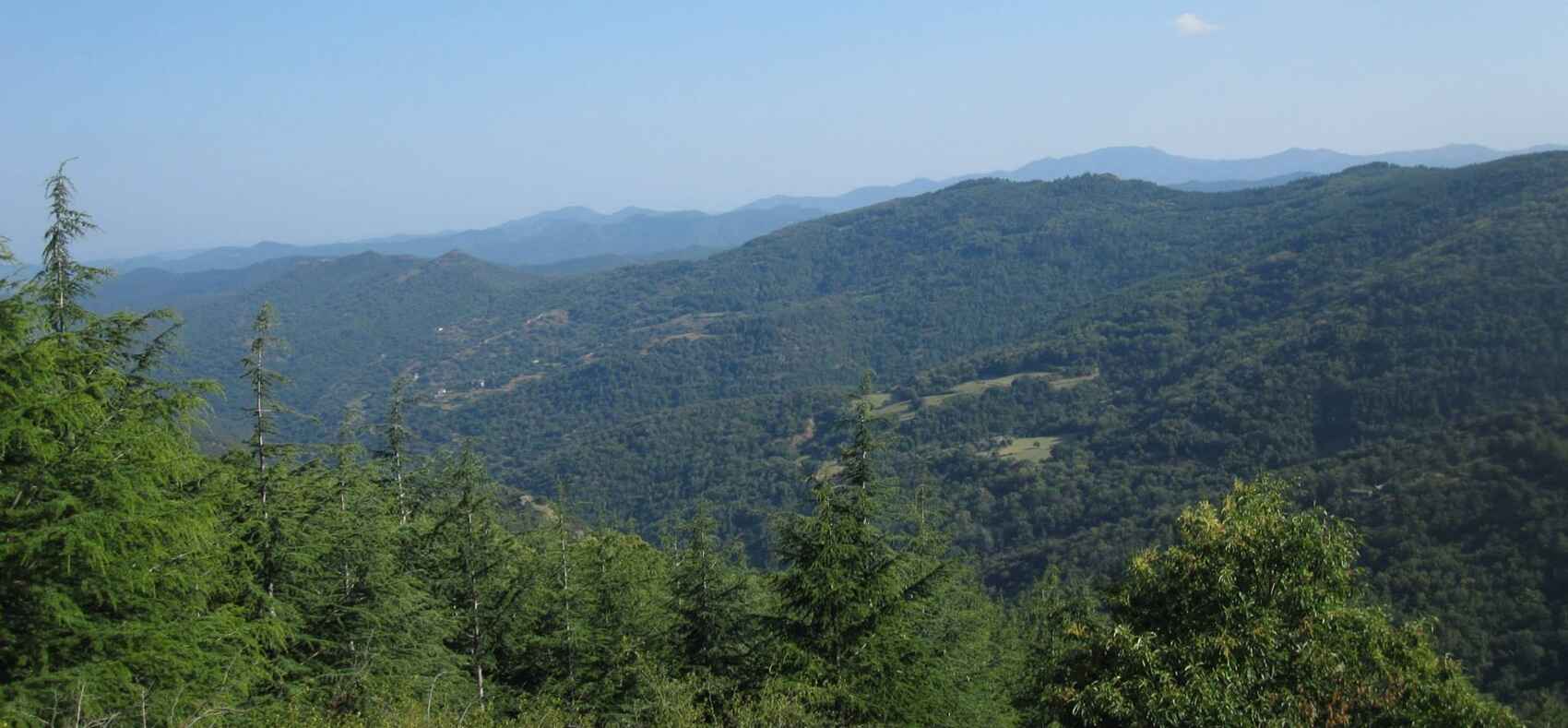
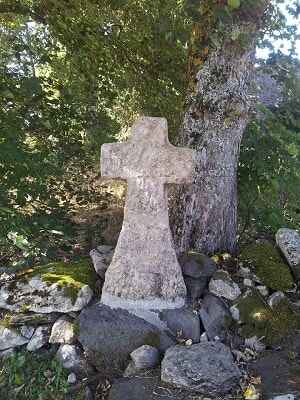 Its name may be derived from « milia », a measure that among the Romans meant « a thousand paces » and was represented by columns separating distances on a « via », similar to how kilometer markers work on roads.
Its name may be derived from « milia », a measure that among the Romans meant « a thousand paces » and was represented by columns separating distances on a « via », similar to how kilometer markers work on roads.
More likely, its name comes from its position amid the waters « medio aquae millac, miliacum, millacense » if we agree that this camp was, for three-quarters of its circumference, surrounded by the waters of the Allier and the Donozau. Some would add the lake of Ponteyre if its disputed existence were admitted.
An explanation for its designation as « mountain of soldiers » would justify a name of « citadel of soldiers » through the designation « mons militum or militum arx ».
In any case, the name is indeed that of the district in which it was included.
The legend has made it the camp of Caesar, although, presumably, this Roman general never set foot there. Only his legions may have stayed there, or rather, transalpine occupation troops at the time of the invasion could have turned it into a fortified camp.
It is a natural fortress perfectly suited for defense.
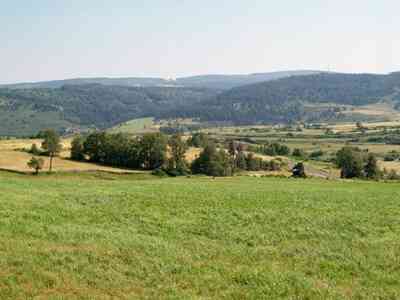 Steep, rocky, barren slopes protect a platform located 200 m above water level, while fortifications arranged on the other slopes made it an impregnable camp. At the summit, an oval perimeter, with respective axes of 210 and 100 m, covering an approximate area of two hectares, was surrounded by dry stone walls forming bastions, with a steep outer face, elevated on the inside and even lined with a paved ditch for water drainage. The entrance, on the side of La Valette, was defended by redoubts, now dismantled, but whose existence is revealed by piles of stones gathered nearby.
Steep, rocky, barren slopes protect a platform located 200 m above water level, while fortifications arranged on the other slopes made it an impregnable camp. At the summit, an oval perimeter, with respective axes of 210 and 100 m, covering an approximate area of two hectares, was surrounded by dry stone walls forming bastions, with a steep outer face, elevated on the inside and even lined with a paved ditch for water drainage. The entrance, on the side of La Valette, was defended by redoubts, now dismantled, but whose existence is revealed by piles of stones gathered nearby.
On the Cheylaret side, one can discern, halfway up, a buttress arranged for defense. A praetorium, erected in the middle of the terrain, on a rocky promontory, dominated the platform and was likely the observation and command post. Piles of rolled stones, certainly brought from the valley, indicate the means of defense used. The water belt of the rivers and swamps of Ponteyre completed the isolation of the castra, a true stronghold, difficult to capture. Its only weak point was a total lack of drinking water, which would have made a prolonged siege precarious.
This error in forming a fortified camp confirms Caesar's opinion regarding the incompetence of the Gauls in defense warfare. It was already evident at Uxelladum, where the besieged army, lacking water, sent out suppliers at night to ensure essential resupply. The Roman leader stationed slingers and archers and paralyzed the water supply necessary for the camp.
It has been assumed that Mont-Milan, a Roman oppidum, was never a Gabalian camp, as no trace of walls built according to Gallic methods has been found. The absence of fortifications alternating between a bed of raw stones and beams laid out in their full length and amalgamated with earth, to render the attackers' war machines, battering rams, and catapults ineffective, is explained by the fact that the Romans, succeeding the Gabalians, substituted their own concepts of fortifications for the more primitive ones of their enemies.
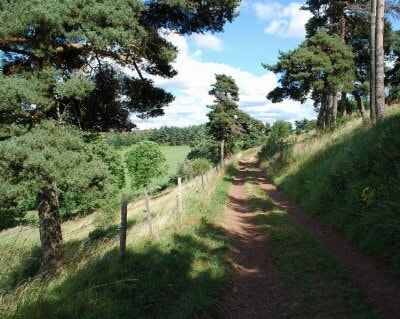 The plowshare and the excavations undertaken have uncovered only medals, coins, and weapon debris, primarily Roman; however, pieces of pottery exhumed do not imply their exclusive origin from the Caesar's legions. Their antiquity and characteristics would suggest a date prior to the year 27 BC, that is, before the invasion. As for the designation of the camp of Caesar, transmitted through the ages, it remains very hypothetical. The great Roman general does not seem to have come to Gévaudan. The history indeed recounts that the conquest of pagus Galvadanus was the work of his lieutenants. Therefore, for him to have stationed at Mont-Milan, one would need to admit his passage during a march toward Arvernie, via the Regordane, while returning from quelling a rebellion in Narbonaise.
The plowshare and the excavations undertaken have uncovered only medals, coins, and weapon debris, primarily Roman; however, pieces of pottery exhumed do not imply their exclusive origin from the Caesar's legions. Their antiquity and characteristics would suggest a date prior to the year 27 BC, that is, before the invasion. As for the designation of the camp of Caesar, transmitted through the ages, it remains very hypothetical. The great Roman general does not seem to have come to Gévaudan. The history indeed recounts that the conquest of pagus Galvadanus was the work of his lieutenants. Therefore, for him to have stationed at Mont-Milan, one would need to admit his passage during a march toward Arvernie, via the Regordane, while returning from quelling a rebellion in Narbonaise.
Mr. Ignon concludes this possibility, which has been copied, unchecked, by Mr. Abbot Fourcher and Mr. Grasset. However, it is misinterpreting the Commentaries to arrive at this conclusion.
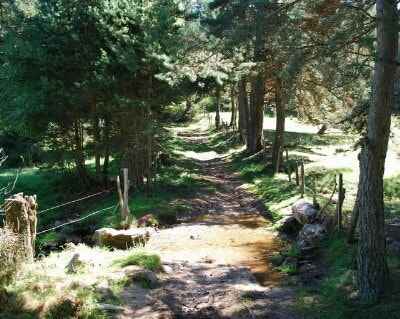 Book VII says: « To cross the Cévennes mountain that raises a barrier between the Arvernes and Helviens, Caesar had the snow that obstructed the road removed, in the hardest season of the year and at the cost of the enormous fatigue of his soldiers, he reached the borders of Arvernie ».
Book VII says: « To cross the Cévennes mountain that raises a barrier between the Arvernes and Helviens, Caesar had the snow that obstructed the road removed, in the hardest season of the year and at the cost of the enormous fatigue of his soldiers, he reached the borders of Arvernie ».
The error of Mr. Ignon and his copyists is therefore in contradiction with the text of the Commentaries. Coming from the Volques Arécomiques (Gard), Caesar did not take the Régordane but entered the land of the Helviens to join his army massed at Aps (Alba Helviorum) and lead it toward Gergovia, in a forced march, via St-Cirgues-en-Montagne, Revesio, and Brivate, clearing the snow, overcoming obstacles and falling unexpectedly on his enemies commanded by Vercingétorix.
Thus, since Langogne is neither on the invasion route nor on the retreat path of the Legions, Caesar could not have stayed at Mont-Milan. At most, one could admit that some cavalrymen, placed as flank guards of the army, detached themselves to raid and plunder, following the usual methods of war, while also protecting the bulk of the troops against any surprise attack, and came to fail at the oppidum. Alternatively, in their retreat movement, the legions, who had avoided attacking an overwhelmingly superior enemy, may have stationed at Mont-Milan during their withdrawal for a necessary rest, while Caesar, abandoning his command, hurried away on a forced march to Vienne.
If there were a need for other considerations, one might advance the impossibility of accommodating an army of 24,000 men plus its impedimenta on a platform of 2 hectares in the heart of winter. We must also agree that the oppidum was only occupied by the Romans at the time of their invasion of the Gabale country. Certainly, it is regrettable to destroy a beautiful legend and to exclude from Langogne the great figure of Caesar, the opponent of the memorable Gallic chief Vercingétorix. Fortunately, there are tenacious reminiscences that help maintain memories, especially if they are attached to the enigmatic druidic era adorned with its pagan practices such as the worship of the golden calf, in the forest on the slopes of Mont-Milan.
It is known that the simplistic soul of the Gabale, worshipper of Tentatès and Esus, nurtured a passionate love for his Home and his Fatherland. Exalting ceremonies took place at the time of the invasion, recalled in the episode of Valléda of Chateaubriand: « Upon hearing that Caesar was crossing the Cévennes, the Gabalian warriors, gathered in the Mont forest, plunged into the lake, bearers of torches that made the weapons sparkle, forming a long procession of infinite sadness. The bards, to the sound of the hrote, sang the praises of the god who was to be buried. The druid sacrificed a victim in whose entrails he saw a troubling future, then in an open pit, he hid the golden sickle and the objects of worship; the warriors buried their weapons there. Then the druid delivered a speech extolling distress and hope. All swore to preserve their Celtic traditions and to keep their faith in the god Teutatès and also in Esus, the invincible, until the day when, delivered from the invader, they would revive their abandoned cult and unearth their war weapons, faithful to their country ».
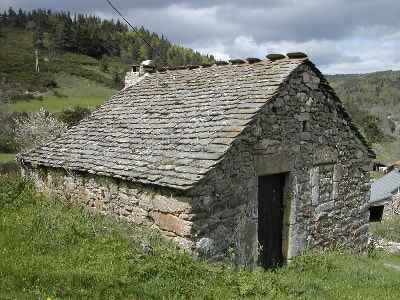 Alas! The druids were persecuted, religion withered, and pagan practices took root. Yet the Gabale retained its memories and the vision of a proscribed religion. The Gallic gesture remained. Despite the edicts of Augustus, Tiberius, and Claudius, secretly, they joined the druid in the forest to practice a cult that leaned towards a sort of paganism through the veneration of certain animals sculpted, among which dominated the bull, both a sacrificial victim and a symbol of power and strength. This bull overshadowed the exotic deities of the Celtic. His sympathy also went to the Grandmother, the Mother of the gods, the Phrygian Cybele whose worship spread during the time of Marcus Aurelius and Antoninus.
Alas! The druids were persecuted, religion withered, and pagan practices took root. Yet the Gabale retained its memories and the vision of a proscribed religion. The Gallic gesture remained. Despite the edicts of Augustus, Tiberius, and Claudius, secretly, they joined the druid in the forest to practice a cult that leaned towards a sort of paganism through the veneration of certain animals sculpted, among which dominated the bull, both a sacrificial victim and a symbol of power and strength. This bull overshadowed the exotic deities of the Celtic. His sympathy also went to the Grandmother, the Mother of the gods, the Phrygian Cybele whose worship spread during the time of Marcus Aurelius and Antoninus.
The most extravagant manifestation was the taurobole, which consisted of sacrificing a bull on a pit covered with a lattice. The faithful placed underneath received the blood of the victim. He emerged hideous, soiled with blood, but washed and purified. These ceremonies received grand support and were performed before the gathered crowd. Individuals, magistrates, decurions, priests of the cult or galls, emasculated, painted, cut their flesh, shook their hair, trampled, contorted; a corporation of deudro-phores provided the sacred pine carried in front of the goddess as an emblem, followed by flute players, dancers of Cybele, the attendants of the Grandmother, a whole irregular clergy, wandering, begging, suspicious. The festival continued with processions, initiations, complicated, bizarre rites. It ended with the inauguration of a memorial altar bearing the head of the bull garlanded and decorated with the sword that had struck it.
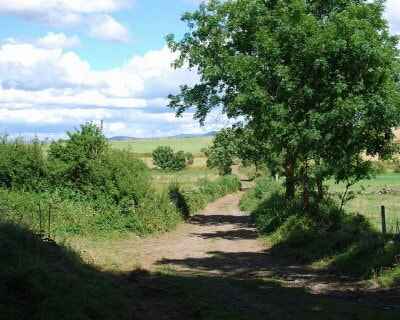 The tauroboles attracted the hatred and anger of Christians. Their antagonism was directed against the devotees of Cybele and pursued them at Mont-Milan. St. Gregory of Tours preached against this form of paganism which he compared to the madness of the Hebrews worshipping the golden calf, while Moses on Sinai received the Tablets of the Law. The struggle intensified before a cult that was otherwise inexplicable. The Gabalian legend, symbolized by a bull with a powerful head and horns, representing strength and courage, raises the question: how did this people come to worship a calf?
The tauroboles attracted the hatred and anger of Christians. Their antagonism was directed against the devotees of Cybele and pursued them at Mont-Milan. St. Gregory of Tours preached against this form of paganism which he compared to the madness of the Hebrews worshipping the golden calf, while Moses on Sinai received the Tablets of the Law. The struggle intensified before a cult that was otherwise inexplicable. The Gabalian legend, symbolized by a bull with a powerful head and horns, representing strength and courage, raises the question: how did this people come to worship a calf?
The memory remains of a calf raised on a pedestal that the crowd of idolaters surrounds and celebrates, and also of a Christianity, already widespread, fervent, fanatical, that stirs believers against the practices of an opposing monotheism. It rallies its faithful and hunts down the impious cult. Conflicts of belief lead to bloody skirmishes, and the worshippers of the golden calf can only perform their ceremonies at night in the strange decor of the large woods of Mont-Milan. Their adorations continue but degenerate into pitched battles that lead to a cessation of their practices. The emblem of their cult, too compromising, is buried on the hillside in the hope of being unearthed one day.
Ages have passed, the protagonists of this singular calling have faded without revealing the location of the golden calf's burial, which remains unfound, despite what is said, excavations, and searches. The problem remains: where is the golden calf of Mont-Milan?
Thus the legend of the golden calf has fallen asleep!
It is recognized that Mont-Milan is a mound in the middle of the waters that border it: the Allier, the supposed great river of Aquitaine; the splashing flow of the Donozau stream crossing the muddy banks of what is called the ancient lake of Ponteyre. But was there ever a lake at Ponteyre?
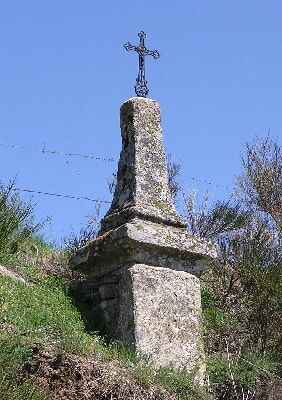 Historians have studied the Gabale country, and they are named: Cord and Viré, Fourcher, Ignon, Grasset, Lhermet, Aimeras, who, while copying each other, named this lake, without worrying about the reality of its existence. Some have spoken poetically of « its deep waves », alluding, no doubt, to the account of Gregory of Tours saying: « For three days in a row, on the shores of a Gevaudan lake, the crowd gathered to make libations and sacrifices. They threw into the waters pieces of fabric, wool fleeces, wax cheeses, breads, not to mention richer offerings, and there were "feasts and orgies that were finally interrupted by storms caused by angry gods ». Others, less verbose, were satisfied to point out, by designating the Régordane way (GR®700), that it passed by the slopes of the oppidum and « bordered the shore of the lake ». One of them saw a hypothetical agglomeration « in these places, equipped with a sanctuary where the devout crowds went on pilgrimage ».
Historians have studied the Gabale country, and they are named: Cord and Viré, Fourcher, Ignon, Grasset, Lhermet, Aimeras, who, while copying each other, named this lake, without worrying about the reality of its existence. Some have spoken poetically of « its deep waves », alluding, no doubt, to the account of Gregory of Tours saying: « For three days in a row, on the shores of a Gevaudan lake, the crowd gathered to make libations and sacrifices. They threw into the waters pieces of fabric, wool fleeces, wax cheeses, breads, not to mention richer offerings, and there were "feasts and orgies that were finally interrupted by storms caused by angry gods ». Others, less verbose, were satisfied to point out, by designating the Régordane way (GR®700), that it passed by the slopes of the oppidum and « bordered the shore of the lake ». One of them saw a hypothetical agglomeration « in these places, equipped with a sanctuary where the devout crowds went on pilgrimage ».
Thus is history written. From this supposed gathering of dwellings, from this sanctuary, there is not the slightest trace. Yet, there are footprints that are, so to speak, indelible. The ashes of fires remain visible, debris of pottery, objects of broken or shaped stone or metal, coins, etc. can be discerned. The necropolises or at least sarcophagi, or strictly simple tumuli mark the stay of men. However, nothing, absolutely nothing, has been discovered to this day. Does the future hold promise of some sensational revelation? They had thought of lake dwellings on the lake, but not a single stake, not the least piling has been noticed.
All the aforementioned epistolers have agreed to speak of a « Roman » work employed to open, between the hills of Naussac and Mont-Milan, a fault intended to allow passage to a tiny stream, the Donozau, and at the same time to drain from its still waters the lake of Ponteyre. Considering the epic labor required to open this breach, one is astonished that astute writers did not see the inconceivable realization. Not only is the digging of the valley inadmissible, but with the rudimentary means of transport of the time, where on earth would the debris have been deposited since there is no pile nearby?
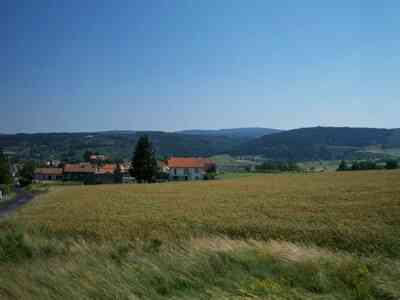 And for what utility would the Romans have taken on such work, which could only weaken the defense of the oppidum by draining a lake that protected it and removing a fish-rich reservoir, precious for their sustenance? One cannot imagine that it was their intention to recover a useless piece of land while so much space remained uncultivated. Other arguments, of another order, confirm that there was no lake at Ponteyre.
And for what utility would the Romans have taken on such work, which could only weaken the defense of the oppidum by draining a lake that protected it and removing a fish-rich reservoir, precious for their sustenance? One cannot imagine that it was their intention to recover a useless piece of land while so much space remained uncultivated. Other arguments, of another order, confirm that there was no lake at Ponteyre.
In examining the vast basin that would have contained the lake, one sees, in the beautiful panorama towards Tuilerie, Barre, Bonjour, up to Rocles, cultivated land or meadows, resting on the cushioned gneiss of a basaltic flow from the Pliocene volcano that have no appearance of nautical banks and not the slightest stratification of sediments resulting from the stay of a water layer; from Rocles to Besses and Eriges stretches a peneplain from the Pleistocene era shaped by the disappearance of the ice age where not a trace of corrosion manifests, although it is constant on the edges of the moving waters of a lake; the granite cliff, from the stampian age, which, from Eriges to Naussac, borders the depression of Gazelle possesses detrital formations of conglomerates, sandstones, sandy clays and bright colors, which led the legend to say that they were stained with the red of a nosebleed from Gargantua, as he journeyed from Montpellier to his homeland of Beauce. Crevices with lowered compartments do not have the stratifications of sediments usually deposited by still waters.
On the other hand, the course of the Donozau shows very pure, pebbly sands, of rolled quartz and Bajocian fossil jaspers of the middle Jurassic type or lower colithe. Its valley is regular with a gentle slope, demonstrating the peaceful course of a stream evacuating its spring waters, without risk of torrential flood, through the lowland of a basin that has neither the appearance nor the remnants of a lake. The examination of its meanders does not show any stratification which would otherwise be in contrast with the muddy banks, simple depressions with crevices, lined with rotting vegetation in perfect similarity to peat bottoms. However, does not peat occur in flat areas where slow-flowing waters settle? No fossil has been found there. In light of these major, formal reasons, a beautiful legend fades that collides with the impossible existence of a lake at Ponteyre.
Former holiday hotel with a garden along the Allier, L'Etoile Guest House is located in La Bastide-Puylaurent between Lozere, Ardeche, and the Cevennes in the mountains of Southern France. At the crossroads of GR®7, GR®70 Stevenson Path, GR®72, GR®700 Regordane Way, GR®470 Allier River springs and gorges, GRP® Cevenol, Ardechoise Mountains, Margeride. Numerous loop trails for hiking and one-day biking excursions. Ideal for a relaxing and hiking getaway.
Copyright©etoile.fr